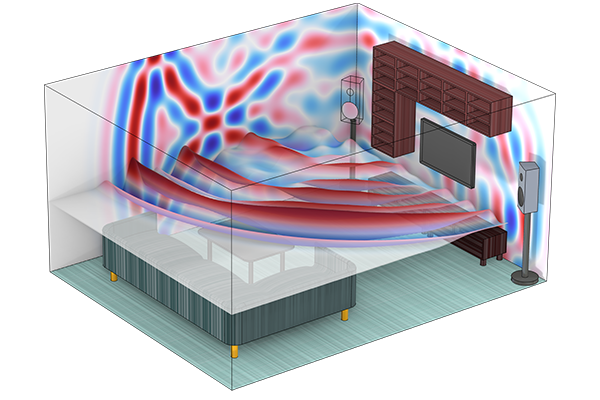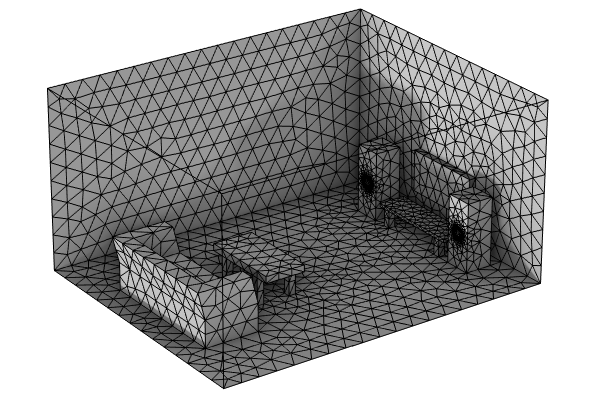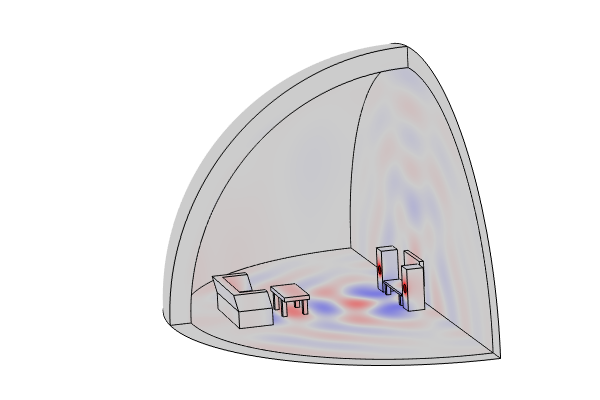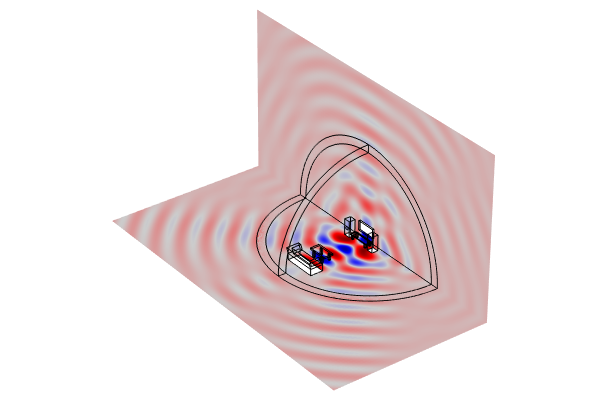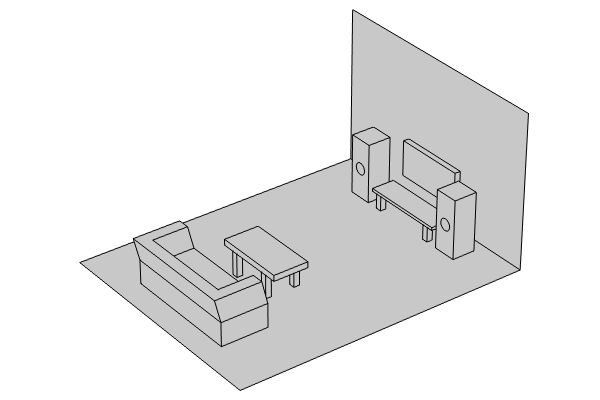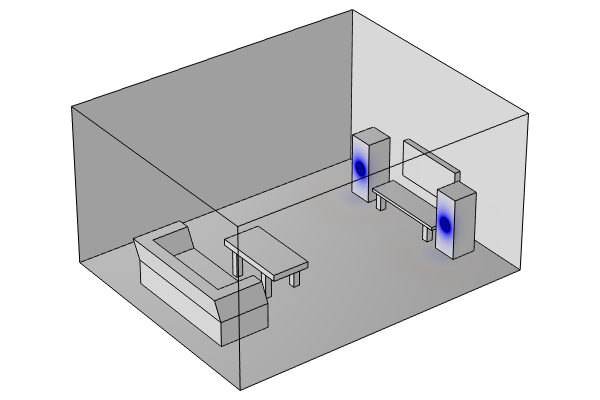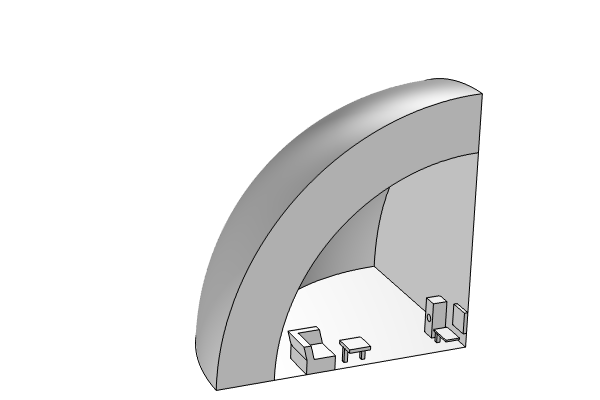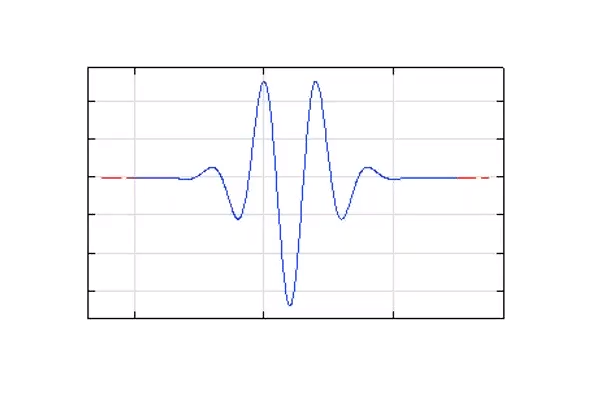Modeling Pressure Acoustics
In this 9-part, self-paced course, learn how to model pressure acoustics in COMSOL Multiphysics®. Through step-by-step demonstrations in the software, comprehensive discussions, and thorough explanations, you will gain a solid foundation in the fundamentals of building such models. You will also learn about various specialized physics features and modeling techniques you can use to efficiently perform acoustics analysis. The material covered through the duration of the course is as follows:
 Room acoustics surround domain, open space, and half space.
Different versions of the acoustics of a room geometry used for various pressure acoustics analyses performed through the duration of the course.
Room acoustics surround domain, open space, and half space.
Different versions of the acoustics of a room geometry used for various pressure acoustics analyses performed through the duration of the course.
Part 1: Modeling Room Acoustics
- Introduce example and build from start to finish
Part 2: Meshing and Solving Pressure Acoustics Models
- Meshing and solver considerations and options
Part 3: Including Damping in Pressure Acoustics Models
- Implementing boundary damping and volumetric damping
Part 4: Pressure Acoustics Analysis via Perfectly Matched Layers (PMLs)
- Setting up PMLs to model open space for frequency domain analysis
Part 5: Scattered Field Analysis with the Background Pressure Field Feature
- Using the feature to model and study the scattered pressure field
Part 6: Modeling Pressure Acoustics with the Boundary Element Method
- Review differences in the model setup (versus FEM-based analysis) for pressure acoustics models
- Perform an open space acoustics analysis using BEM
Part 7: Modeling Transient Pressure Acoustics with the Finite Element Method
- Resolving time-dependent waves
Part 8: Setting Up Perfectly Matched Layers for Transient Pressure Acoustics Models
- Setting up PMLs to model open space for transient analysis
Part 9: Time Explicit Method for Large Transient Pressure Acoustics Models
- Solving using the time-explicit discontinuous Galerkin method
 Room acoustics, total acoustic pressure field.
Results for the open-space acoustics analysis using BEM built in Part 6 of the course, displaying the total acoustic pressure field.
Room acoustics, total acoustic pressure field.
Results for the open-space acoustics analysis using BEM built in Part 6 of the course, displaying the total acoustic pressure field.
Model files are included in each part of the course, so you can follow along step by step on your own time. Upon completing this course, you will know how to both effectively and efficiently perform pressure acoustics analysis.
Envoyer des commentaires sur cette page ou contacter le support ici.

